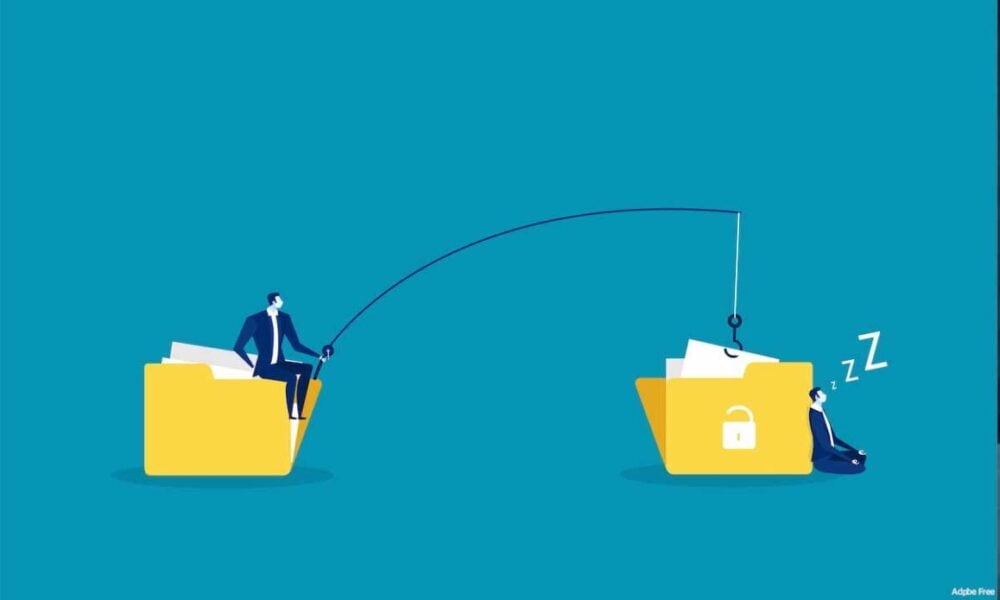Security
Beware Of AI Assisted Ransomware

Businesses increasingly use AI and machine learning in their business applications, from natural language learning and data analysis to completing simple and repetitive tasks. You’ll find AI in customer service platforms like chatbots, accounting, and bookkeeping, to marketing systems, and it’s prevalent in sectors such as healthcare, finance and banking, education, transport, and technology.
However, AI and machine learning are not only used for good; cyber attackers are brutal at work developing new strains of AI-powered malware and intelligent, clever phishing.
Over the past year, the statistics for cybercrime have been worrying Governments and businesses, with Ransomware (a type of malware) accounting for more than $ 11 billion in damages. That figure is expected to keep growing.
The top countries hit by Ramsonware in 2023 include the USA, UK, Canada, Germany and Italy. Business, retail and manufacturing are the main sectors targeted by cybercriminals.
So with it already considered an epidemic, what exactly is Ransomware, and what’s been done to fight it?
Ransomware Explained
Ransomware is a type of malware that prevents user access. The super-smart AI-powered malware can bypass the usual antivirus and malware intrusion detection systems to lock down files by encrypting them from access until a ransom is paid. Once payment is received, the cybercriminals provide the decryption key that unlocks the files so the user can access them.
The AI component of Ransomware does some clever stuff, like conceal the conditions needed to unlock the files and deploy untraceable malicious applications, but it doesn’t stop here. Just like businesses use AI for language learning, the malware can also be trained to recognize types of content, be on the lookout for specific words, and listen to voice prompts.
Face recognition log-in is popular now, too, so of course, intelligent malware can be trained to recognise images. Cybercriminals also use advanced image APIs for face recognition on webcams and security cameras.
Hackers get much personal information or data from the dark corners of the Internet, the ‘dark web’. For example, where you shop online or do, your personal banking data can be stolen, and it often ends up on the dark web, where it is traded to hackers who can use it in their malware. Open source tools are also the target of hackers who can compromise websites, servers and cloud infrastructure. Read now this easy-to-read article on eight common malware infections.
So with the influx of intelligent hacking, what can we do to protect data and devices so we’re not victims of a malicious cyber attack?
Security Must-Dos
Regardless of size, all organisations need to carry out essential security tasks. Here is a list of security ‘must-dos’ for you and your staff.
Passwords
Use a password manager, make sure you use a strong password, and change it regularly.
All staff must also use the password manager to access business systems.
If you’ve got SmartTVs, you should remove the default login credentials and replace them with a unique login. Remember to update it every few weeks or months.
WiFi
Lock down your WiFi network at work and home so it’s ‘private’, and all users need the login. Create a pared-down login for guests with limited WiFi access and change the login regularly.
Firewalls, AntiSpam Filters
Using firewalls to monitor traffic coming in and going out can be set up to create a barrier between your business networks and external networks. Also, use AntiSpam filters to prevent access from untrusted sites and ensure your staff have antivirus software to protect devices, email and web activity.
VPN
Going a step further with your Internet access, use a VPN when accessing your bank or other sites with your financially sensitive personal data.
When you’re using public WiFi, always use your VPN. Using a VPN prevents eavesdroppers, i.e., ISPs, from knowing your browsing activity. With a VPN, your Internet activity is encrypted and untraceable, so hackers can not get access to it.
Multi-Factor Authentication
At a minimum, using two-factor authentication, or at best, multi-factor access to sensitive sites is only allowed after presenting at least a couple of pieces of evidence.
If you’re tardy with changing your passwords, using multi-factor authentication does provide that extra level of protection.
Routers
When was the last time your routers were rebooted? According to cnet.com, the FBI recommended rebooting routers to thwart Russian hackers.
A reboot or ‘power-cycling’ can reset the filters and fix network and connectivity issues – at the very least, it’s worth regularly doing.
Cybersecurity Policy
Engage a cybersecurity advisor for recommendations beyond the basic actions presented here. With their input, create an IT Cybersecurity Policy and a task force to manage it, including auditing and regular maintenance.
The threat of a cyberattack is ever more present. While tech firms are attempting to outsmart or at least contain Ransomware and other malware attacks, business owners and users have a personal responsibility to do all they can to prevent an attack on their assets.






